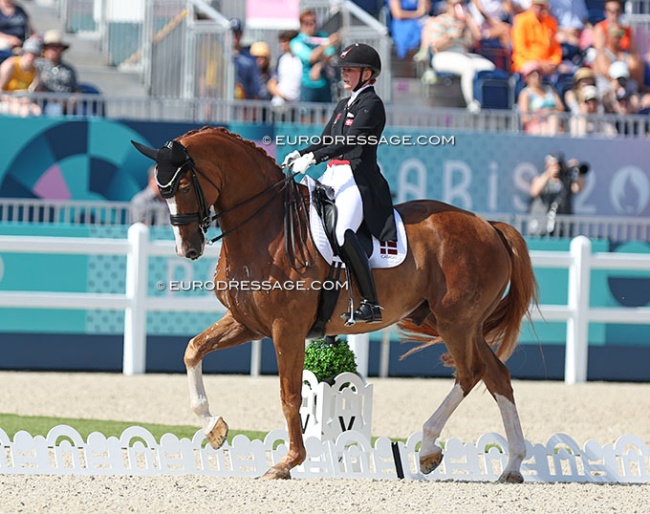
-- Photos © Eurodressage - No reproduction allowed - NO SCREENSHOTS!
Danish Nanna Skodborg Merrald became the high scoring rider of the day in the first part of a two-leg Grand Prix at the 2024 Olympic Games in Versailles on Tuesday 30 July 2024.
Hot Dressage in Purgatory
Words like purgatory, oven, grill, broil, fry, keep simmering in my brain after having experienced the first day of dressage competition at the 2024 Olympics. Therefore I will proclaim Merrald the "Grillmaster" of the day as she proved her experience and skill aboard one of the most talented horses in the world, Zepter in the "Green Egg" that the lushious park of Versailles had become from one day to the next.
After wonderful weather and one rainy day on the first five days in Versailles, where eventing proved that equestrian sport is a more than thriving Olympic discipline, dressage had to deal with a total change in climate. It went from a lovely 23° C to a sunflooded day of 33.8 C* which felt like almost 40 ° C
While the FEI implemented climate mitigation protocols to provide ample cooling for the horses (cooling stations, fans, covered arenas, etc), it were the spectators, press and volunteers whose resilience, passion and commitment to the sport were put to the test. With no spot of shade to be found in the 16,000 seat stadium that was practically sold out, hats, umbrellas, towels and sjawls were the dresscode of the day. It was dressed to survive instead of dress to impress.
Heats Became Groups
The Grand Prix serves as the qualifier for both the team medal final (Grand Prix Special) as well as the Individual medal final (Kur to Music).
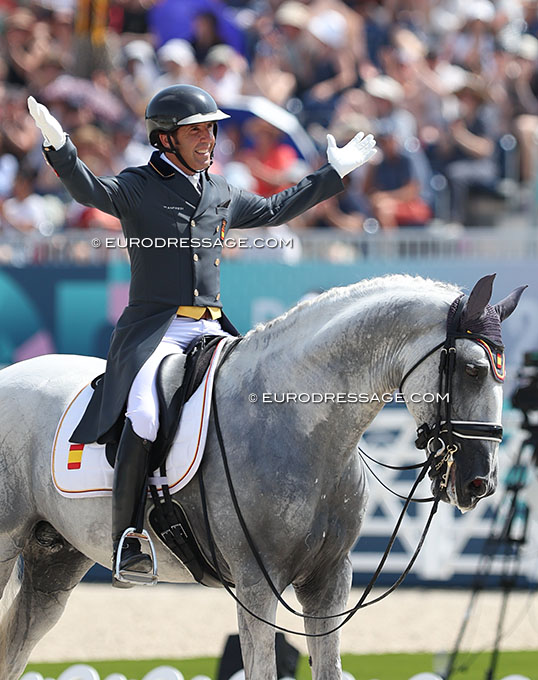
This system works very well as in the end it will turn out that the 18 highest scoring riders made it into the Kur. The FEI wanted to follow the heat/group system also adopted in other sports to make it more understandable and recognizable to a wider audience. Funnily it seems to be a crux for the dressage people.
The 10 highest scoring teams in the Grand Prix (so 30 riders in total) are allowed to compete for team medals in the Special.
The order of go for the Grand Prix is decided not by a random draw, but the FEI World Ranking for Horses and each group has a nice mixture of lower and higher ranked horses, keeping each block of riders interesting instead of having all the big names at the end of the day.
Now that the rules of the game are explained, let's get cracking.
Group A: Merrald Leads

Nanna Merrald and Zepter (by Zack x Wolkentanz II) were second to go into the arena and straight away received the high score of the day from the panel of seven distinguished judges including Susanne Baarup (DEN), Mariette Sanders (NED), Raphael Saleh (FRA), Michael Osinski (USA), Magnus Ringmark (SWE), Henning Lehrmann (GER), and Isobel Wessels (GBR). The 14-year old Oldenburg had only done one test at the CDI Hagen in June this year to secure his spot on the Danish team. In Hagen he didn't look in strongest shape, but in Versailles he started off with a strong canter for the entry, but then a rather tense first trot extension followed. The first passage was rather uneven and the first piaffe a bit small, but he improved from there with a wonderful second piaffe-passage with proper sit in the second piaffe. The canter started out very collected, but the extension and zig zag were solid, the pirouettes excellent and the one tempi changes straight. The finished with a good final centerline although the piaffe at X was wide in front. The judges rewarded her ride with 78.028% with individual marks ranging from 76.522% to 79.783%.

Not automatically qualified for the Finals but having scored the third best result in Group A (which will most likely take him into the Kur finals anyway) was British legend Carl Hester aboard Fiona Bigwood's KWPN bred Fame (by Bordeaux x Rhodium). The sensitive Fame has been so beautifully schooled by Hester even though he does not seem to be given his rider an easy ride. A mini spook upon entering the arena and again going on the diagonal proved how "on alert" this horse is. Hester rides him with quite a short neck for control, but the contact is always supple and equally elastic on both reins. The right half pass was a bit tense, the passage was expressive and particularly the second pi-pa smoothly ridden. The last one needed to be more even behind. The uphill one tempi changes were a highlight, the zig zag looked proper, and the pirouettes well executed. It was a meticulously ridden test that earned him a 77.345% score. His marks were between 75.435% and 78.804%.
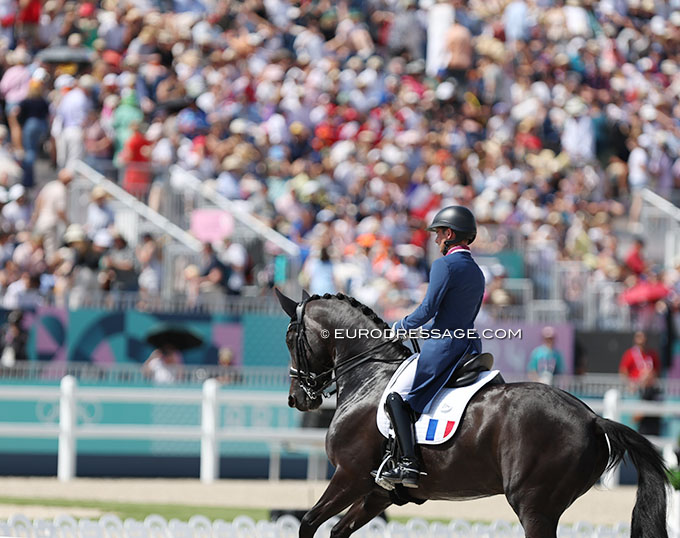
Group B: Another Dane on Top
Early in the afternoon, when temperatures were peaking and heads started to spun from heatstroke, Danish Daniel Bachmann Andersen ended up as the group winner with a rather generous score of 76.910%. His tall bay stallion Vayron (by Vitalis x Gloster) has improved much this 2024 show season, but still relies very heavily on his rider instead of carrying himself in lightness. This tall powerhouse is massively impressive in the trot and canter extensions (like Jovian), but Vayron also shines in the tempi changes that are straight and ground covering. In the passage he is too lanky in the body and not really in self carriage. The hindlegs don't take enough weight and in piaffe he gets narrow behind or crosses. Bachmann has plenty of skill sin his toolbox to present the horse in the best possible way in the current form that the horse is and this mainly seems rewarded by the judges. The marks clearly differed between 75.109% and 79.674%
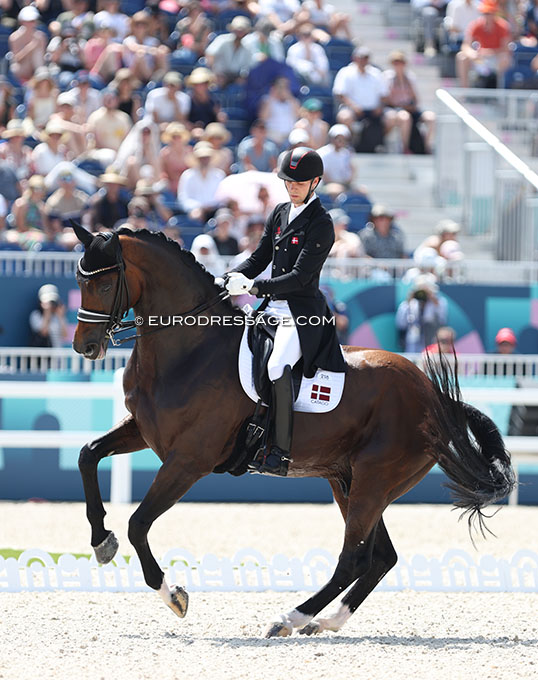
Finnish Emma Kanerva had a season best ride on Greek Air (by Gribaldi x Florestan). The pocket size chestnut was sharp on the aids and very willing today with very bubbly passage, but in piaffe he crosses in front. They posted 73.680% for third place in the group.
Belgian Flore de Winne and her black stallion Flynn (by Fahrenheit x Sir Oldenburg) achieved a personal best score of 73.028% and even that mark was stingy of the judges. The pair goes through the test with such ease, nicely up in the poll and with minimal aids from the riders. Maybe at times he gets a bit open in the mouth, but overall the picture is a steady one. The passage is wonderful and the horse does the entire canter tour easy-peasy with straight tempi changes and good pirouettes. The piaffes lack sit and lift in the withers, but this horse does not piaffe that much less poorly than some of the higher scoring horses...
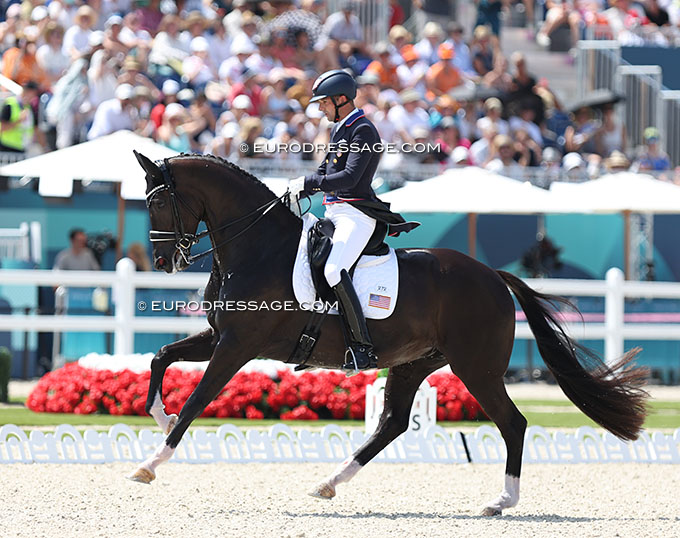
Group C: Da Bomb
British Becky Moody and her home bred 10-year old Jagerbomb (by Dante Weltino x Jazz) are the fairytale story of the event: home bred, home schooled and riding the Olympics as their first ever international senior dressage championships. Trained by David Hunt, Moody and "Bomb" made a late entry into the British team as first reserve after Dujardin got provisionally suspended right before departure to Paris.
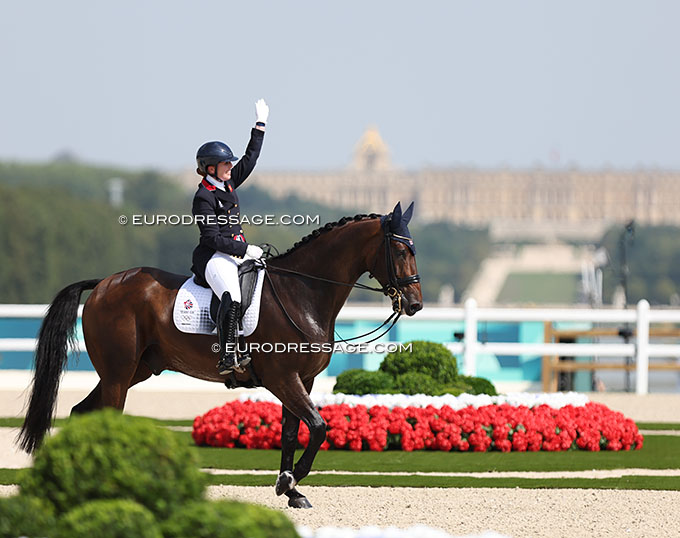
Right behind her were World Cup winners Patrik Kittel and Touchdown (by Quaterback x Sack). The bay gelding has incredible freedom in the shoulder and has so much reach in front, which he shows in the trot extensions and half passes. The passage was rather a slow trot and today the horse regularly backstepped in the two piaffes. The two tempi changes showed improved straightness. The extended canter was good, the one tempi changes ground covering. They got 74.317%
American Adrienne Lyle and the KWPN bred Helix (by Apache x Jazz) ranked third in group C with 72.593%. The gorgeous liver chestnut with dapples is a very talented horse, but the young partnership between Lyle and the gelding still shows. The horse is much too tight in the neck and at times sticks the tongue in front or shows it on the side. Helix has plenty of talent for the piaffe and passage work. The second passage was wonderful and also in the piaffe he can really sit and lift in the withers, but the finesse in the steering is not yet there. The tempi changes were a highlight.
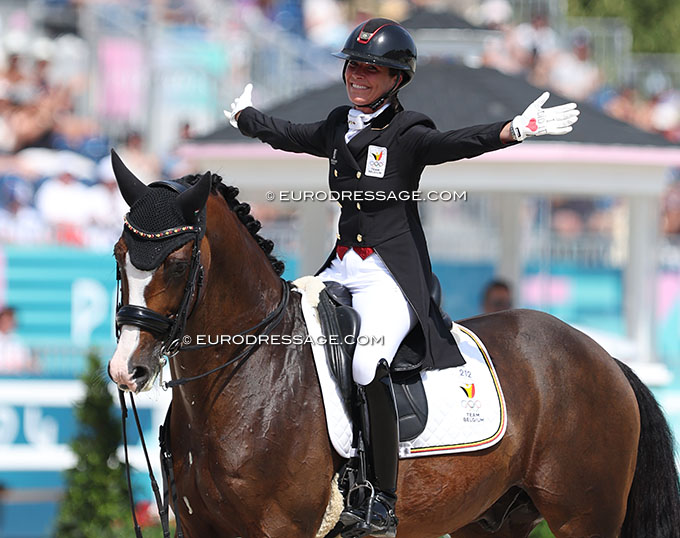
At the moment, the six highest scoring riders who did not finish in the top two of the groups are Hester, Kanerva, De Winne, Lyle, Pauluis and Ramel. Let's see what tomorrow brings as the Grand Prix comes to a conclusion and we will know which countries ride the team competition in the Special and which 18 individuals made it to the Kur.
The weather forecast for tomorrow is 31 ° C and a thunderstorm in the late afternoon. A Demain !
- Text and Photos © Eurodressage (this article expresses Eurodressage's' eye-witness account and opinion about the competition)
Eurodressage is taking photos of all competitors in Versailles. No reproduction allowed - NO SCREENSHOTS!
Related Link
Eurodressage Coverage of the Olympic Games